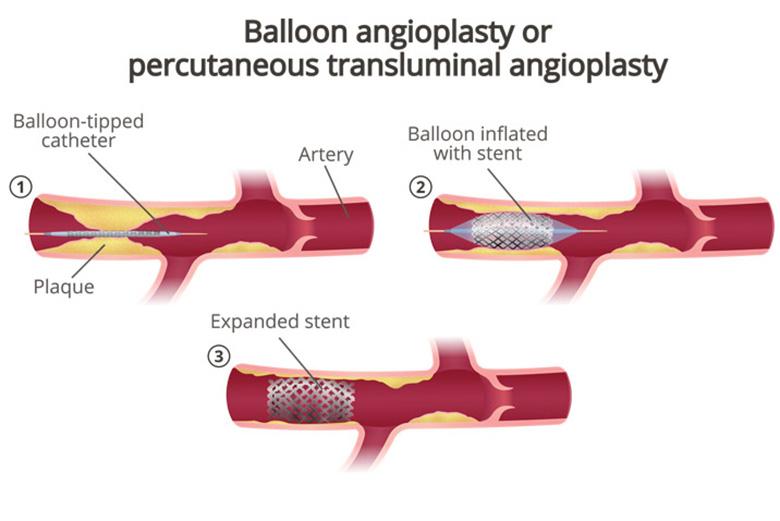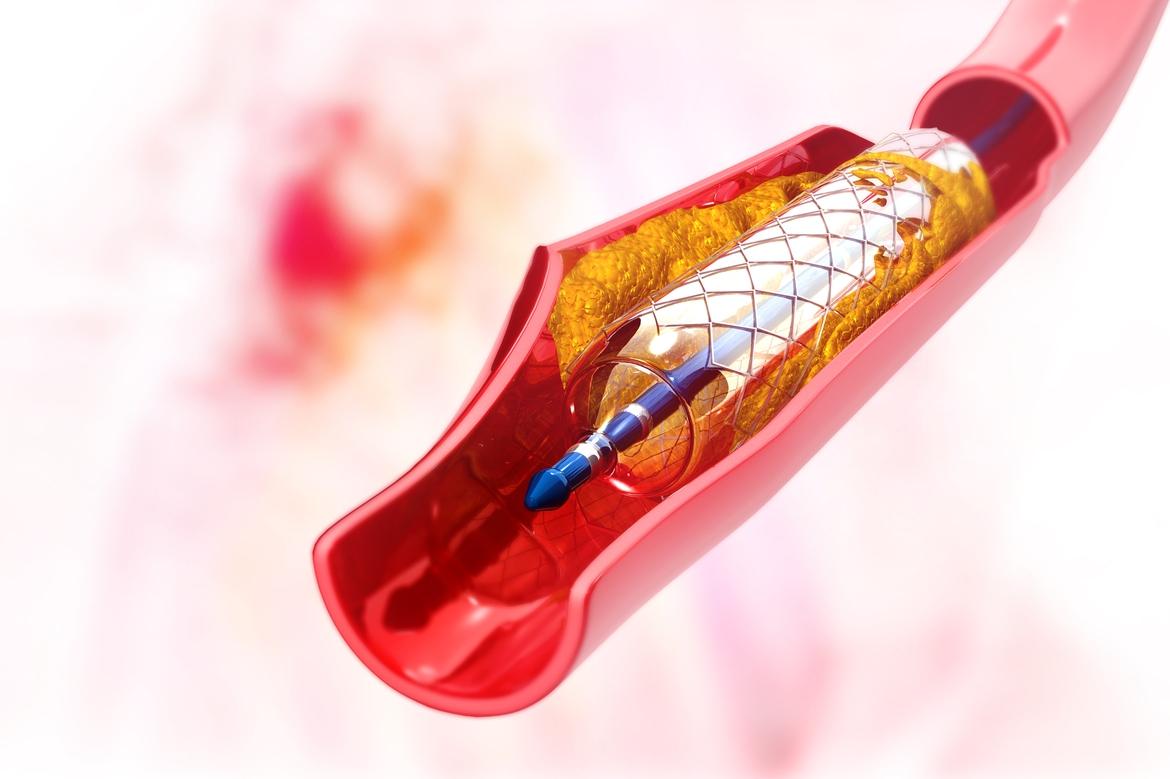What is PTCA?

Percutaneous transluminal coronary angioplasty (PTCA) is also known as coronary angioplasty. It is a type of percutaneous coronary intervention (PCI), or minimally invasive procedure, to correct clogged arteries.
The procedure opens coronary arteries that have been narrowed or blocked due to the build-up of fatty deposits known as plaque. This restores blood flow to the heart muscle.
Types of PTCA
There are 2 types of PTCA:
- Balloon angioplasty uses a thin tube called a catheter, with a deflated balloon at its tip. The catheter may be inserted through a large artery in the leg or the radial artery in the forearm. Once inserted, it is carefully guided to the blocked portion of the artery. The balloon is then inflated to push the accumulated plaque against the walls of the artery, restoring normal blood flow to the heart muscles.
- Coronary artery stenting uses a small wire mesh to prevent the blocked artery from re-narrowing after balloon angioplasty. This procedure is also known as coronary stenting.
Why do you need PTCA?
Angioplasty can reduce symptoms such as chest pain and shortness of breath, and enable you to resume normal activity.
Your doctor may recommend PTCA if:
- You were unable to improve your condition through medication or lifestyle changes.
- You experience worsening symptoms, such as increased chest pain (angina) or shortness of breath.
Who should not undergo PTCA?
Depending on your condition and overall health, your doctor may recommend coronary artery bypass grafting (CABG) instead. You may need CABG if:
- Your heart muscle is weak.
- You have diabetes and more than one severe blockage in your arteries.
- The main artery that supplies blood to the left side of your heart is narrow.
What are the risks and complications of PTCA?
PTCA is a safe procedure, with a low risk of complications. However, like any other surgery, it carries a small risk.
Rare complications include heart attack, stroke and kidney injury due to the contrast dye. In general, the risk of rare complications is less than 1%.
How do you prepare for PTCA?
Before recommending PTCA, your doctor will review your medical history.
To ensure that it is safe for you to undergo the procedure, your doctor may also recommend a chest X-ray, electrocardiogram or blood test.
Once your PTCA has been scheduled, your doctor will advise you on how to prepare. In general, you need to:
- Stop eating 6 hours before the procedure
- Stop drinking 4 hours before the procedure
Note: If you are taking any medication or herbal supplements, you should inform your doctor. You may need to adjust or stop taking these before the procedure.
What can you expect in PTCA?
PTCA is usually performed under local anaesthesia. Though general anaesthesia is not needed, it is an almost pain-free procedure. It may be performed through the wrist, arm or groin.
Estimated duration
The procedure lasts about 30 – 60 minutes. In the event of multiple blockages or unlikely complications, it may take longer.
Before the procedure
To help you relax, your doctor may give you some pain medication or sedatives. You may also receive blood thinners to prevent blood clots from forming. Meanwhile, a healthcare professional will clean the insertion area.
During the procedure
To numb the pain of inserting the needle and catheter, a healthcare professional will inject local anaesthesia into your groin or wrist.
Once the catheter reaches the opening of the coronary artery, your doctor will:
- Insert a dye and take an X-ray to determine the location of the blockage.
- Insert a balloon catheter and guide it to the blockage.
- Inflate the balloon catheter for a few seconds to compress the plaque against the artery walls, then deflate it.
- Repeat the process several times at each blockage, and again at other blockages.
After the balloon is deflated, your doctor may insert a coronary stent to reinforce the artery and prevent it from narrowing again.
Before removing the catheter, your doctor will inject a contrast media and take another x-ray to view your arteries and check your coronary stent placement.
Care and recovery after PTCA
After the procedure, you may need to stay overnight for observation. You should drink lots of water to flush out the procedure's contrast dye.
Once you are discharged, you may be able to return to work in a week’s time. While at home, you should:
- Continue to drink lots of water.
- Avoid strenuous activity and heavy lifting for a week.








